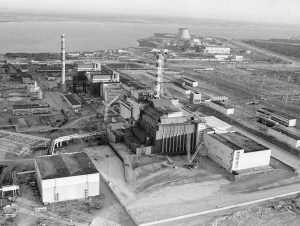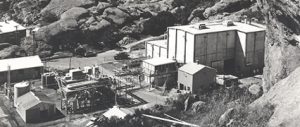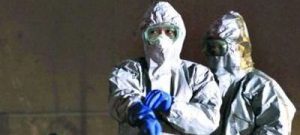Every day there are more setbacks to solving the Japanese nuclear crisis and it’s pretty clear that the industry and governments are telling us little; have no idea how long it will take to control; or what the real risk of cumulative contamination may be.
The authorities reassure us by saying there is no immediate danger and a few absolutist environmentalists obsessed with nuclear power because of the urgency to limit emissions repeat the industry mantra that only a few people died at Chernobyl – the worst nuclear accident in history. Those who disagree are smeared and put in the same camp as climate-change deniers.
I prefer the words of Alexey Yablokov, a member of the Russian academy of sciences and adviser to Mikhail Gorbachev at the time of Chernobyl: “When you hear ‘no immediate danger’ [from nuclear radiation] then you should run away as far and as fast as you can.”
Five years ago I visited the still highly contaminated areas of Ukraine and the Belarus border where much of the radioactive plume from Chernobyl descended on April 26, 1986. I challenge the UK chief scientist John Beddington and environmentalists like George Monbiot or any of the pundits now downplaying the risks of radiation to talk to the doctors, the scientists, the mothers, children and villagers who have been left with the consequences of a major nuclear accident.
It was grim. We went from hospital to hospital and from one contaminated village to another. We found deformed and genetically mutated babies in the wards; pitifully sick children in the homes; adolescents with stunted growth and dwarf torsos; foetuses without thighs or fingers and villagers who told us every member of their family was sick.
This was 20 years after the accident but we heard of many unusual clusters of people with rare bone cancers. One doctor, in tears, told us that one in three pregnancies in some places resulted in malformations and that she was overwhelmed by people with immune and endocrine system disorders. Others said they still saw caesium and strontium in the breast milk of mothers living far from the areas thought to be most affected, and significant radiation still in the food chain. Villages testified that “the Chernobyl necklace” – thyroid cancer – was so common as to be unremarkable; many showed signs of accelerated ageing.
The doctors and scientists who have dealt directly with the catastrophe said that the UN International Atomic Energy Agency’s “official” toll, through its Chernobyl Forum, of 50 dead and perhaps 4,000 eventual fatalities was insulting and grossly simplistic. The Ukrainian Scientific Centre for Radiation Medicine, which estimated that infant mortality increased 20 to 30% after the accident, said its data had not been accepted by the United Nations because it had not been published in a major scientific journal.
Konstantin Tatuyan, one of the “liquidators” who had helped clean up the plant, told us that nearly all his colleagues had died or had cancers of one sort or another, but that no one had ever asked him for evidence. There was burning resentment at the way the UN, the industry and ill-informed pundits had played down the catastrophe.
While there have been thousands of east European studies into the health effects of radiation from Chernobyl, only a very few have been accepted by the UN, and there have been just a handful of international studies trying to gauge an overall figure. They range from the UN’s Scientific Committee on the Effects of Atomic Radiation (UNSCEAR) study (57 direct deaths and 4,000 cancers expected) to the International Physicians for the Prevention of Nuclear War (IPPNW), who estimated that more than 10,000 people had been affected by thyroid cancer alone and a further 50,000 cases could be expected.
Moving up the scale, a 2006 report for Green members of the European Parliament suggested up to 60,000 possible deaths; Greenpeace took the evidence of 52 scientists and estimated the deaths and illnesses to be 93,000 terminal cancers already and perhaps 140,000 more in time. Using other data, the Russian Academy of Medical Sciences declared in 2006 that 212,000 people had died as a direct consequence of Chernobyl.
At the end of 2006, Yablokov and two colleagues, factoring in the worldwide drop in births and increase in cancers seen after the accident, estimated in a study published in the annals of the New York Academy of Sciences that 985,000 people had so far died and the environment had been devastated. Their findings were met with almost complete silence by the World Health Organisation and the industry.
So who can we trust when the estimates swing so wildly? Should we believe the empirical evidence of the doctors; or governments and industrialists backed by their PR companies? So politicised has nuclear energy become, that you can now pick and choose your data, rubbish your opponents, and ignore anything you do not like. The fact is we may never know the truth about Chernobyl because the records are lost, thousands of people from 24 countries who cleaned up the site have dispersed across the vast former Soviet Union, and many people have died.
Fukushima is not Chernobyl, but it is potentially worse. It is a multiple reactor catastrophe happening within 240 kilometres of a metropolis of 30 million people. If it happened at the Sellafield site in north-western England, there would be panic in every major city in Britain. We still don’t know the final outcome but to hear experts claiming that nuclear radiation is not that serious, or that this accident proves the need for nuclear power, is nothing short of disgraceful.
https://www.guardian.co.uk/
Copyright © Guardian News and Media Limited 2011
Homepage image by Jan Grarup/NOOR, courtesy of Greenpeace, shows a mourner in Drosdyn, a village west of Chernobyl.


